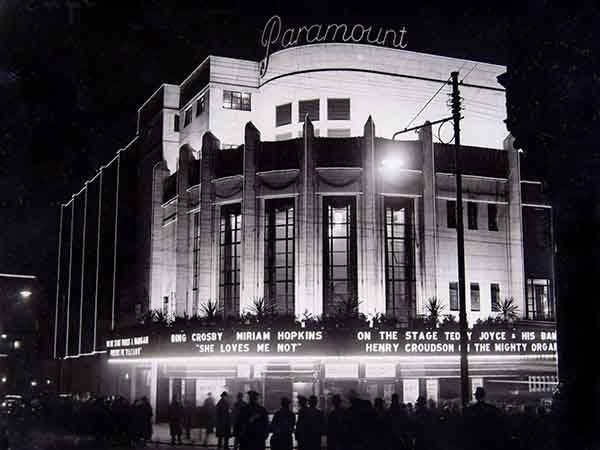Lumartos
Lights! Camera! Action... (Print 2411475)
Lights! Camera! Action... (Print 2411475)
Couldn't load pickup availability
Glasgow really was 'cinema city' when the Paramount in Renfield Street screened the Bing Crosby romantic comedy 'She Loves Me Not' in 1934.
Designed by the London architectural practice of Verity and Beverley, the Art Deco venue had opened on Hogmanay 1933/34, and film mad Glaswegians had never seen anything like it.
In the 1930s Glasgow boasted over 110 cinemas and a total seating capacity in excess of 175,000. That was more cinemas per head than any other city in the world. By the 1950s, Govan alone had nine cinemas, one more than the city of Aberdeen, which had twice Govan’s population. Mind you, when many of the city’s 1m plus population were crammed into often-overcrowded and cold and draughty tenement flats, the city’s cinemas provided a degree of privacy, in centrally-heated comfort
It wasn’t only a movie you could enjoy. This was a multi-entertainment venue. The five-storey, white granite façade concealed two cafes and a restaurant, with the auditorium doubling as a music venue, with 15 dressing rooms hidden away backstage.
On this night in 1934, and you might have to squint to read it, Canadian star Teddy Joyce and his band were playing for your dancing pleasure. Nicknamed 'The stick of dynamite', due to his energy, Joyce died, aged just 37, in 1941 after collapsing on stage at the nearby Green's Playhouse (later the Apollo).
By that time the Paramount had changed its name to the more familiar Odeon. In 1939, at the first sighting of the storm clouds of war gathering over Europe, its original, US studio owners had sold up all their UK cinemas.
Oscar Deutsch, the founder of the Odeon chain, was only too happy to snap it up. Canny businessman that he was, he guessed that war would only increase the demand for cinematic escapism.
--
noreferrer">Shipping page for information about our available services.If you are interested in purchasing one of our products but live outside of the UK please get in touch.
--
The Herald Picture Store is proud to present these images in their actual condition. We haven't manipulated these photographs and are proud of their character.
Please be aware that due to their age some images may show imperfections. This is as a result of the technology available at the time they were captured and/or scanned and saved for our records.







